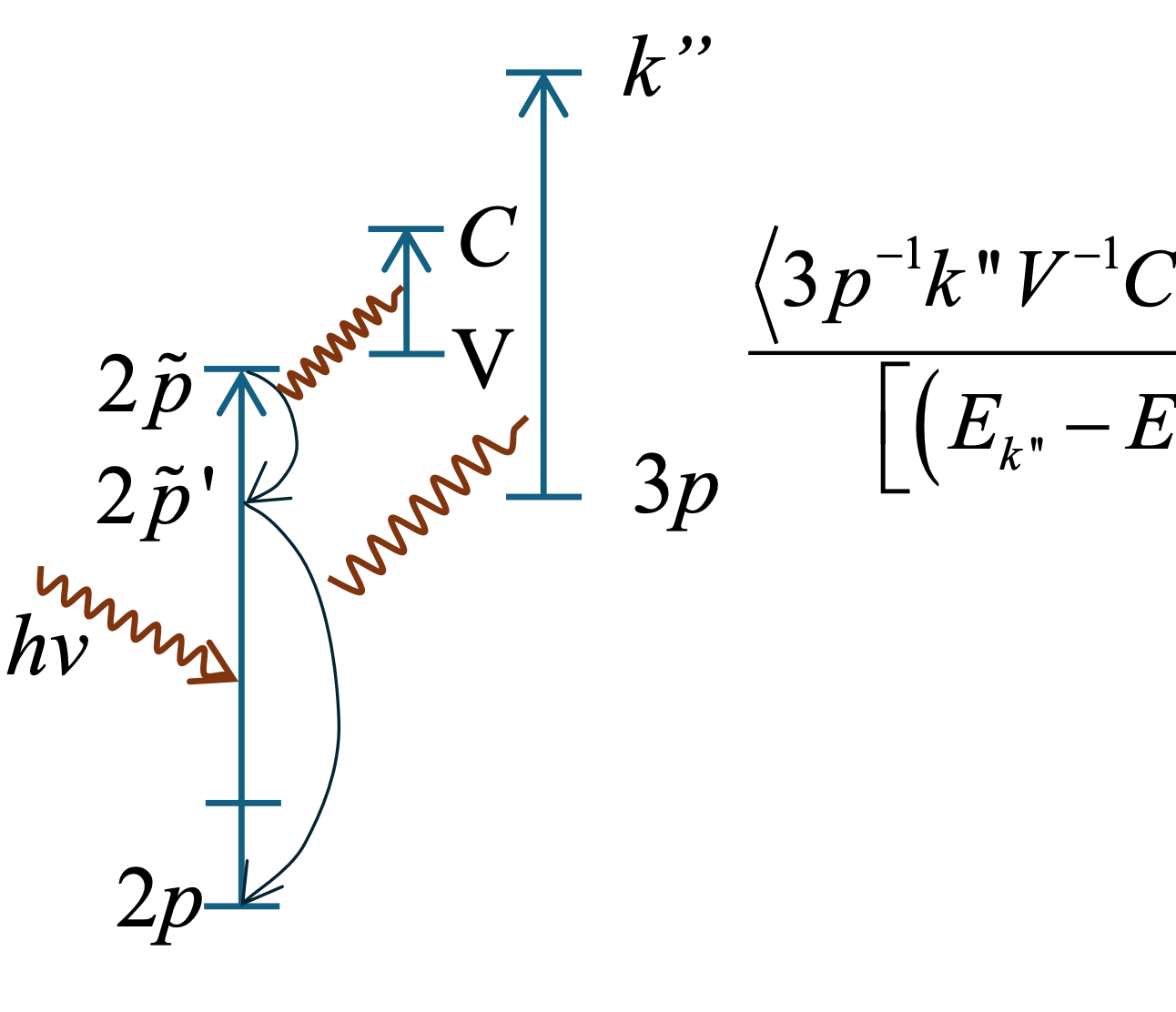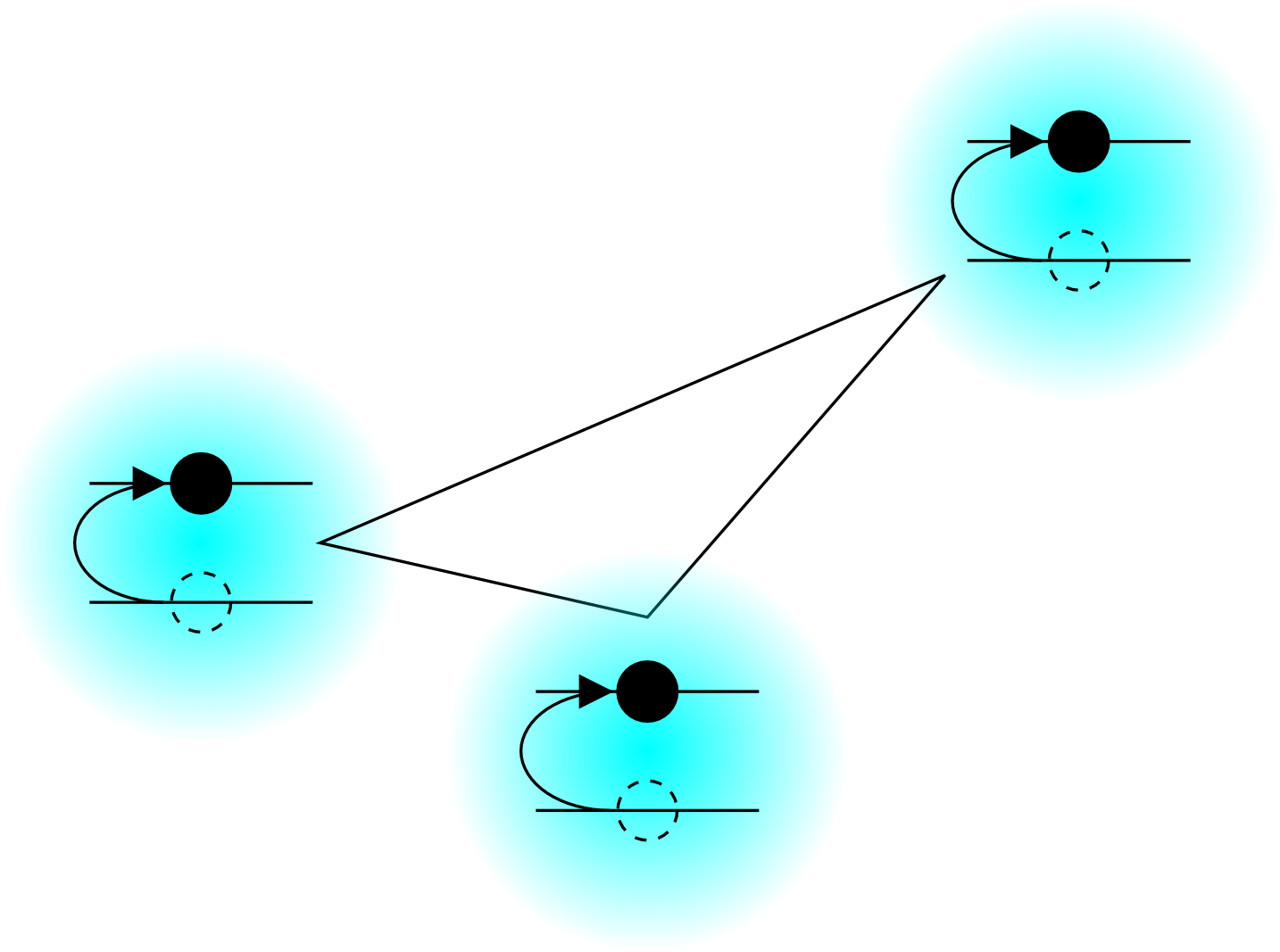One elementary open problem in the electronic structure theory of solids
is the source of extra background electrons in x-ray photoelectron spectroscopy.
Removal of this background component is phenomenologically understood, and it must be done for compositional analysis.
However, its contribution to the total electron flux is not accounted for by direct cross-sections,
and its shape is not accounted for by energy losses as electrons traverse the solid.
In collaboration with an experimental group, we proposed an interesting many-body effect by which some of the total flux
can be accounted for by a kind of intensity borrowing from a deeper core polarization;
energy losses to the valence from this transient local oscillator give an unusual background shape.
This hypothesis is supported well by the experiments of our collaborators.
We are now working on an approach to semi-quantitative (trend-predictive) simulation.
Project publications. Click sidebar to see all publications.

|
The background in X-ray photoelectron spectroscopy data originates, partially, from inelastically scattered photoelectrons. In fact, the current theoretical methods for calculating the background intensity are based on electron energy losses. However, a critical part of the experimental signal, which is known as the Shirley background, cannot be described within the current formalisms. This suggests that the Shirley electrons are not associated with energy losses of photoelectrons and must originate from a different photoexcitation phenomenon with a cross section of its own. We propose a mechanism based on core channeling as the physical origin of the Shirley signal.
|

|
A new approach—termed the Narrow Shirley background—is introduced for analyzing the intrinsic background in X-ray photoelectron spectroscopy (XPS). In XPS, the photoemission signal comprises extrinsic and intrinsic contributions. The extrinsic signal, also known as the inelastic background or Tougaard background, arises from electrons that lose energy after excitation through inelastic scattering events before reaching the spectrometer. This background component dominates at higher binding energies, typically around 60 eV from the main photoemission peak. Conversely, the intrinsic signal originates primarily during photon absorption and encompasses the remaining features, including photoelectron peaks, Auger peaks, and the intrinsic background. While the well-known Shirley background describes the intrinsic background in the near-peak region, a significant part of the intrinsic background extends to higher binding energies. This extended background exhibits a rich structure, particularly in spectra from third and fourth-row metals. This paper proposes the Interchannel Coupling with Valence Band Losses (ICVBL) mechanism as the underlying origin of the entire intrinsic background, extending its role beyond the near-peak region (i.e., the Shirley background) as previously suggested [10.1002/sia.6364]. The Narrow-Shirley background is similar to the Shirley background in the near-peak region; still, it decays at higher binding energy to allow for incorporating other peaks to describe the structure of the intrinsic background. Besides focusing on the Narrow-Shirley background, this paper discusses the broader implications of the ICVBL mechanism in understanding intrinsic background structure.
|
|
 go to UOP homepage
go to UOP homepage
 go to UOP homepage
go to UOP homepage
 © Copyright 2012–2025
© Copyright 2012–2025